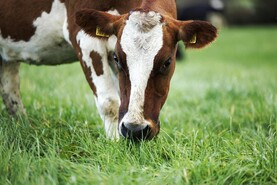Spring-calving dairy farmers are on their starting orders for the sprint to get as many cows calved in as short a time period as possible. For those outside the industry, the rush to calve cows in spring sounds like madness. But those working in dairy farming understand finding the balance between mean calving date and magic day, when grass growth exceeds demand. This has a big bearing on how much quality milk will be produced at low cost.
Of course, getting it from the cow to the milk tank is the job of the milking equipment on the farm. In this special Focus on milking equipment, Stephen Connolly profiles a recently built 20-unit milking parlour in Offaly. The Molloy family built the parlour to reduce workload on the farm by speeding up milking times. Like a lot of parent/child partnerships, Paul is working full time off-farm, so time is the biggest constraint. With 120 cows to calve, their new high-spec parlour is well capable of handling them in less than an hour.
Reading their story, it’s easy to see the impact that the TAMS grant has had on their decision to build. It was a huge financial help to this partnership, who benefited to the tune of €80,000 towards the cost of the development. As the TAMS II scheme begins to wind down over the coming year, thoughts will be turning to what is going to replace it, which will surely be an election issue.
On the subject of milk quality, we give solutions to cleaning milking equipment without chlorine. The issue is that chlorine-free cleaning agents are inferior to chlorine when it comes to cleaning and sterilising milk plants. However, by using the correct product in the correct way, issues can be overcome.






 This is a subscriber-only article
This is a subscriber-only article










SHARING OPTIONS: